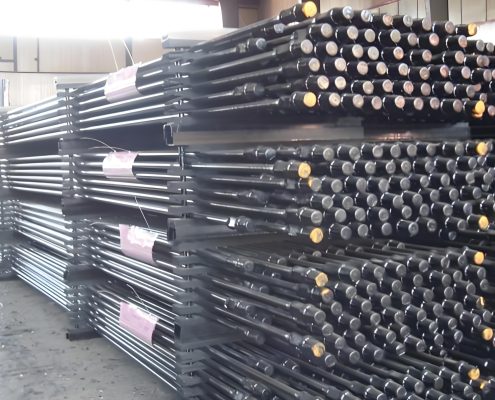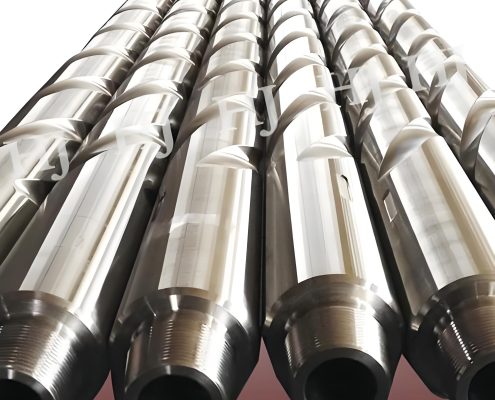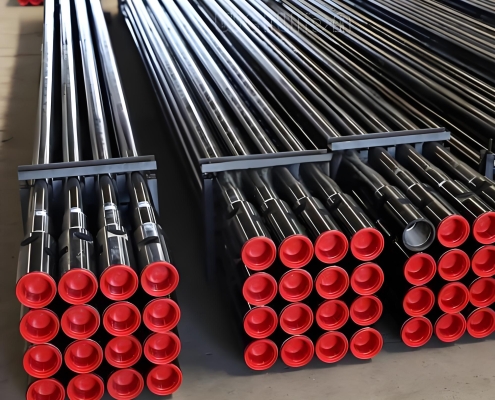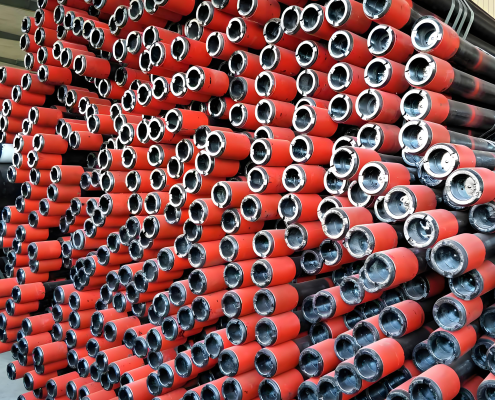Future Energy Steel provides a comprehensive range of Oil Country Tubular Goods (OCTG), including API 5CT Casing Pipes, Oil Tubing, and API 5DP Drill Pipes, essential for drilling and transporting oil and gas. Our high-quality OCTG products, such as casing pipes that support well walls, oil tubing that safely transports hydrocarbons to the surface, and drill pipes that transmit drilling power, are designed to ensure the integrity and efficiency of operations in the oil and gas industry. We also offer API Spec 7-1 Drill Collars, API Spec 7-2 Drill Bits, and API Spec 11B Sucker Rods, all manufactured to meet stringent industry standards. With a focus on durability and performance in challenging environments, our OCTG solutions are ideal for your specific needs. Contact us today at [email protected] for a tailored quotation and to learn more about how our products can enhance your oil and gas operations.
FAQs
What is OCTG?
OCTG (Oil Country Tubular Goods) refers to a category of pipes and associated components used in the oil and gas industry for drilling and production operations. OCTG includes a range of tubular products designed to withstand the demanding conditions encountered in oil and gas extraction, such as high pressure, high temperature, and corrosive environments. These products are essential for creating wells, transporting oil and gas from the reservoir to the surface, and ensuring the integrity of the wellbore.
What Are the Types of OCTG?
OCTG products typically include the following types:
- Casing: Pipes are used to line the wellbore, providing structural support and isolating different geological formations. The casing prevents the wellbore from collapsing and protects groundwater from contamination.
- Tubing: Pipes placed inside the casing to transport oil and gas from the reservoir to the surface. Tubing is designed to withstand the pressure and temperature of the produced fluids.
- Drill Pipe: Hollow, high-strength pipes used to connect the drill bit to the surface equipment. Drill pipes transmit the rotational force and drilling fluid to the drill bit.
What Are the Grades of OCTG?
OCTG products come in various grades, each designed for specific applications and conditions. Common grades include:
- API 5CT Grades:
- H-40: Standard grade for general use in less severe conditions.
- J-55: Suitable for lower pressure applications.
- K-55: A higher strength version of J-55.
- N-80: Designed for higher pressure and temperature conditions.
- L-80: Offers enhanced strength and resistance to corrosive environments.
- P-110: High-strength grade used in extreme conditions.
- Special Grades: These are often developed for specific applications or conditions, such as sour service or high-temperature environments, and include grades like Q-125 or S-80.
What Are the Manufacturing Standards of OCTG?
OCTG products are manufactured according to various industry standards to ensure quality and performance. Key standards include:
- API Spec 5B, 17th Edition – Specification for Threading, Gauging, and Thread Inspection of Casing, Tubing, and Line Pipe Threads
- API Spec 5L, 46th Edition – Specification for Line Pipe
- API Spec 5CT, 11th Edition – Specification for Casing and Tubing
- API Spec 5DP, 7th Edition – Specification for Drill Pipe
- API Spec 7-1, 2nd Edition – Specification for Rotary Drill Stem Elements
- API Spec 7-2, 2nd Edition – Specification for Threading and Gauging of Rotary Shouldered Thread Connections
- API Spec 11B, 24th Edition – Specification for Sucker Rods, Polished Rods and Liners, Couplings, Sinker Bars, Polished Rod Clamps, Stuffing Boxes and Pumping Tees
- ISO 11960:2020 – Petroleum and Natural Gas Industries — Steel Pipes for Use as Casing or Tubing for Wells
- NACE MR0175 / ISO 15156:2020 – Petroleum and Natural Gas Industries — Materials for Use in H2S-Containing Environments in Oil and Gas Production
What Are the Applications of OCTG?
OCTG products are used in a variety of applications within the oil and gas industry:
- Exploration and Production: For drilling wells, transporting oil and gas, and supporting wellbore stability.
- Completion and Workover: In the completion of wells and maintenance operations to ensure continued production.
- Offshore Drilling: For use in offshore platforms and subsea wells where conditions are more challenging.
- Enhanced Oil Recovery: In techniques such as hydraulic fracturing (fracking) and other enhanced oil recovery methods.
What is the Installation Sequence of OCTG?
The installation sequence of OCTG typically involves the following steps:
- Drilling: Drill pipes are used to drill the wellbore. The drill bit, attached to the end of the drill pipe, cuts through the earth’s layers.
- Casing Installation: The casing is inserted into the drilled wellbore and cemented in place to provide structural support and isolate different geological formations.
- Tubing Installation: Once the casing is set, tubing is installed inside the casing to transport oil and gas from the reservoir to the surface.
- Completion: Additional equipment, such as perforating guns or packers, may be installed to complete the well and enable production.
What is the Difference Between Casing and Tubing?
Casing and tubing are both essential components of OCTG, but they serve different purposes:
- Casing: Casing is used to line the wellbore and provide structural support. It is installed after drilling and serves to prevent the wellbore from collapsing, isolate different geological formations, and protect groundwater from contamination. The casing is typically larger in diameter and is cemented in place.
- Tubing: Tubing is placed inside the casing and is used to transport oil and gas from the reservoir to the surface. It is designed to withstand the pressure and temperature of the produced fluids and is often smaller in diameter compared to casing. Tubing is not cemented in place and can be easily removed and replaced as needed.






